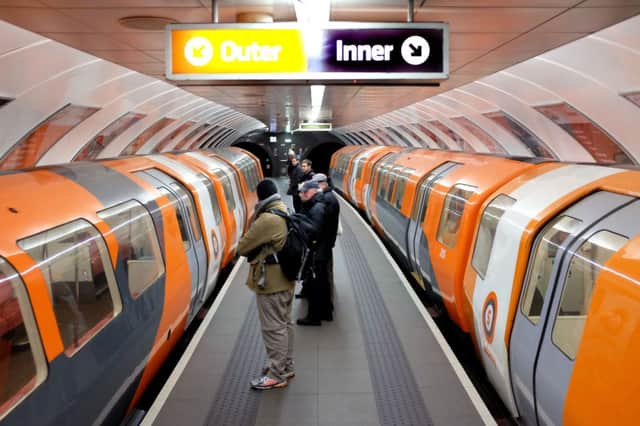Driverless cabs plan for Glasgow Subway


The new fleet is about to be ordered as part of the service’s biggest upgrade for 35 years.
Without drivers’ cabs, passengers will be able to see along the tunnel at both ends of the new trains.
Advertisement
Hide AdAdvertisement
Hide AdStrathclyde Partnership for Transport (SPT) is in the final stages of its five-year quest for a new fleet as part of the £300 million overhaul.
Two shortlisted groups are competing for a contract worth about £200m to build the trains and automated signalling, with a decision due in the next few months. The trains, which will have wi-fi, are expected to run by 2020 – the year before the Subway’s 125th birthday.
Both of the bidders have supplied driverless trains to other metros which have passenger seating and windows at either end.
However, they will have to provide a unique version for Glasgow, because the six-mile circular system’s gauge – the distance between the rails – is 20cm narrower than standard. It was set by rail firms who built the world’s third oldest subway (after London and Budapest) to stop rivals running their trains on it.
Italian firm Ansaldo, which built driverless trains for the Copenhagen metro, is understood to have teamed up with Swiss company Stadler Rail for the Subway work. UK engineering giant Babcock has confirmed its involvement.
Its rivals are believed to be Spain’s CAF, which built Edinburgh’s trams, and France’s Thales, which helped construct the driverless SkyTrain network in Vancouver.
A transport expert said windows at each end of trains were popular with passengers on the driverless Docklands Light Railway (DLR) in London. Simon Johnston, editor of Tramways & Urban Transit magazine, said: “To be able to sit and look out at the front and back makes for a more dramatic journey.
“On the DLR, these seats are the ones which are always occupied first.”
Advertisement
Hide AdAdvertisement
Hide AdSPT has not decided whether to have train staff on board, for instance, to assist passengers in emergencies.
Mr Johnston said: “There’s rarely no staff on trains – most systems tend to have someone on board.”
SPT proposed the upgrade in 2010 to make the ageing system more reliable and enable trains to run more frequently than every four minutes. Trains on some systems built by the bidders can run one and a half minutes apart.
To increase safety, screens will be built along platforms, as they are on some London Underground lines. These open only when a train has stopped.
The Subway’s 15 stations, which handle 13 million passengers a year, are already in the process of being overhauled.
An SPT spokeswoman said: “We are progressing with two bidders through the final stages of the procurement of new bespoke trains, automated signalling, control room and associated system improvements, such as platform screen doors.
“We will provide a recommendation on the award of the contract – and commencement of delivery – to our partnership board later this year.”
The bidding firms declined to comment.